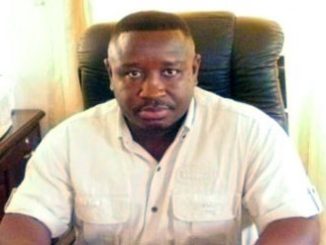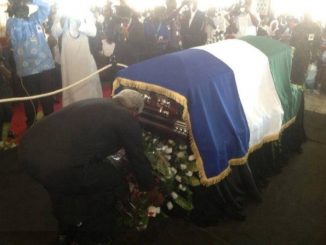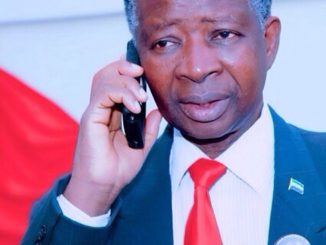
Sidi sheriff
Lawyer and rights advocate of Sierra Leone, Emmanuel Saffa Abdulai, today used a recent quote by Rwanda’s President Paul Kagame to flag the issue of how an African country’s mindset is related to her development or underdevelopment. Sierra Leone is obviously one country in Africa where this issue is compelling. Take a look at some facts below:
• Sierra Leone has gold in Koinadugu district, gold in Tonkolili district, and gold in Bo district, gold in Kailahun district, gold in Pujehun district, among others – but none is mined and used to back her “Leone” currency reserves abroad, especially as the world moves to a full-blown currency warfare period which is characterized by the instability of global currencies in which Sierra Leone’s currency is reserved.
• Sierra Leone has diamond in Kono district, diamond in Kenema district, diamond in Bo district, and diamond in Pujehun district, among others – but none is mined and polished to sell at more than 10 times their worth in the global market in spite of Sierra Leone having a nearly 80-year old history of diamond extraction which is 50 years older than the history of diamond mining in Botswana where diamonds are now polished.
• Sierra Leone has “ore” in Port Loko district (iron ore), “ore” in Tonkolili district (iron ore), “ore” in Moyamba district (iron ore and beauxite), “ore” in Bonthe district (iron ore, platinum, rutile and beauxite), among others – but none is mined and made into at least steel platelets to export at more than 10 times their worth in the global market while creating jobs locally in spite of Sierra Leone having a longer history of ore mining than Mauritania where semi-processing on ore products is now done before export.
• Sierra Leone grows first class organic cash crop trees in Kailahun (cocoa/coffee/oil palm), Kono (cocoa), Kenema (cocoa/coffee) and Pujehun (cocoa/coffee/oil palm), and Bonthe (oil palm/piassava), among others – but none are cultivated, processed and marketed domestically and/or exported at economies of scale and optimized profitability in spite of Sierra Leone providing oil palm seedlings for Malaysia 50 years ago which paved the way for Malaysia to become a global oil palm superpower. Remember, 80% of Sierra Leone’s stable economic growth with high rural employment from the 60s through the 70s was driven by the cash crop value chain enhanced by the railway between Pendembu and Freetown; a chain which also benefited rural cultivators and agribusiness men and women across the four corners of the country.
• Sierra Leone prides itself as having Africa’s oldest Anglo-Saxon institution of higher learning and even as the ‘Athens of West Africa’ – but none of these prides have produced a Socrates, Aristotle, Pythagoras etc in spite of Sierra Leone having a longer history of higher education than (for example) Nigeria where globally renowned authors such as Chinua Achebe, Wole Soyinka, etc have emerged over the years to shape global views about Africa in ways that are more profound.
This list can go on and on if we decide to dwell on the petroleum oil deposits in waters around Sulima, the Lakes of Mape/Mabesi in Pujehun, the beach/mountain tourism potentials of the Western Area peninsular and areas between Bumbuna and Fadugu, the rice research potentials of Rokupr (West Africa’s oldest), the mechanized rice farming potentials of Torbabum (West Africa’s oldest), the Panguma Sawmill, Kenema Forest Industries and timber value chains along the Kambui Hills that link up with other hills in Kono and Kailahun, among others.
The bottom line is that something is not right about the mindset of the country which is a very big indictment of not only the country’s leadership history, but on the country’s educational history and policy as well.
For example, on Sierra Leone’s post-independence educational path compared to Tanzania’s, we must be able to ask why Sierra Leone’s ‘Eastern Polytechnic’ of Kenema which was originally established as a Technical College in 1957 never got a university status long before the ‘Technical College’ of Arusha in Tanzania which got a university status three years later. Remember, the Kenema School is 21 years older than the Arusha School. But both started as certificate schools before becoming degree awarding. And the standards of both schools at inception were set by City and Guilds of London Institute. Both are located outside their countries’ capital. Yet the Arusha school has now invented a helicopter, and not the Kenema school. Are the IQs of students in the Arusha School higher than those of the Kenema school? I doubt.



